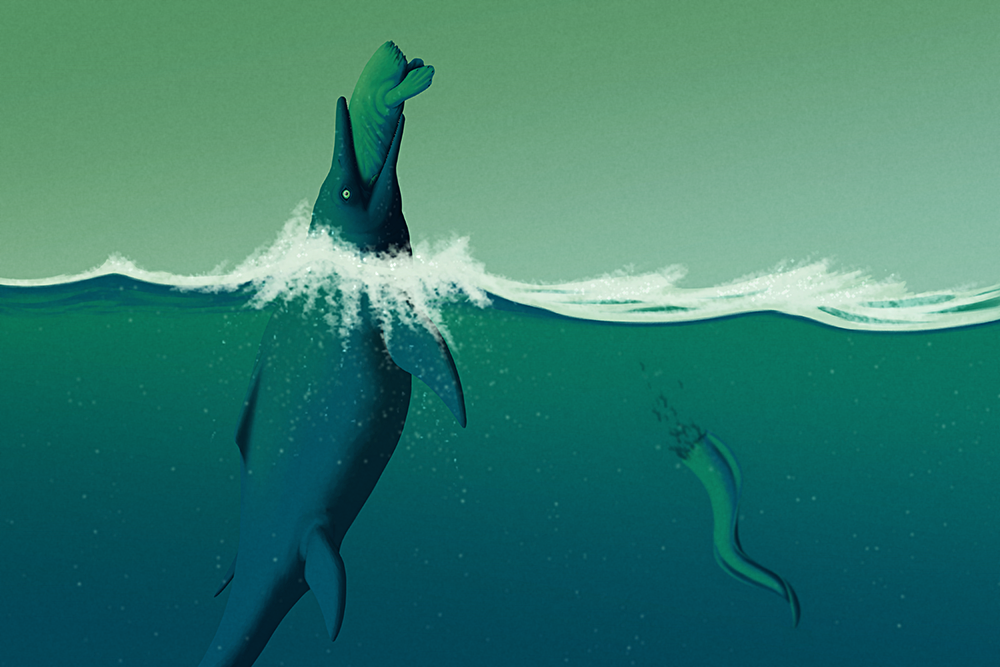In the mid-Triassic seas, covering what will one day be part of southwestern China, an ichthyosaur flails at the surface desperately trying to deal with an ambitiously large meal.
240 million years later human paleontologists will name their kind Guizhouichthyosaurus tangae, and initially assume that their narrow snout and small peg-like teeth are suited only for a diet of small soft-bodied fish and cephalopods.
In reality they eat a much wider range of prey – including other marine reptiles.
But for a 5m long (16’5″) Guizhouichthyosaurus, perhaps this particular catch is a little too much. The unlucky thalattosaur was a rather large example of a Xinpusaurus xingyiensis – nearly matching the ichthyosaur in length at around 4m long (13’2″), although much less bulky – and after biting off the head and tail the predator is still struggling to actually eat the sizeable carcass.
Even with a gravity assist from holding their prize vertically up above the water, swallowing is proving difficult and the Guizhouichthyosaurus can’t breathe around it.
They’re slowly suffocating.
They’ll eventually get it down their gullet, but by then it’ll be too late. Weak and dizzy from asphyxiation, they’ll soon sink to the sea floor and never resurface, their body settling not very far from where their prey’s severed tail fell.

